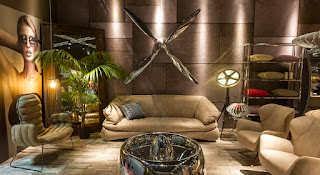Recco: New recipe for success after WWII
By Mariella Radaelli
Tucked into a thyme-scented hillside, the sea town of the Golfo Paradiso borders the
slow-paced fishing village of Camogli and is only a two-hour drive from Milan. While
Camogli, shortened from Case delle Mogli, got his name from the women who watched over the town while their husbands were at sea, Recco’s name originates from the Romans who called the borgo “Recina”.
When I was a child I used to walk with my mother from Recco to Camogli every morning
during our August vacation. To me Camogli meant buying fish directly from the fishermen, while Recco meant fantastic recipes. Both were summer retreats for the Milanese whose
families have returned for generations for their annual dose of sunshine, focaccia and trofie. My father picked Recco because it was “the capital of Ligurian cuisine”. And still it is.
In Recco I missed the multistory buildings of Camogli painted in pinks, yellows and terra-cottas. But there is a reason for such local architectural modesty. Recco was one of Italy’s
most war-damaged cities in WWII.
Bombed 27 times, Recco lost many lives. Never before the town had lost so much and
yet never before there were so many new beginnings. Recco showed strength and pride as it rose as a phoenix from the ashes. Out of the inferno a more modern settlement took shape that concentrated its identity on the culture of food.
The rest of this story published on Sept.15 in the print and online editions of the national L'Italo-Americano newspaper based in Monrovia, California is available here (pdf).




Comments
Post a Comment